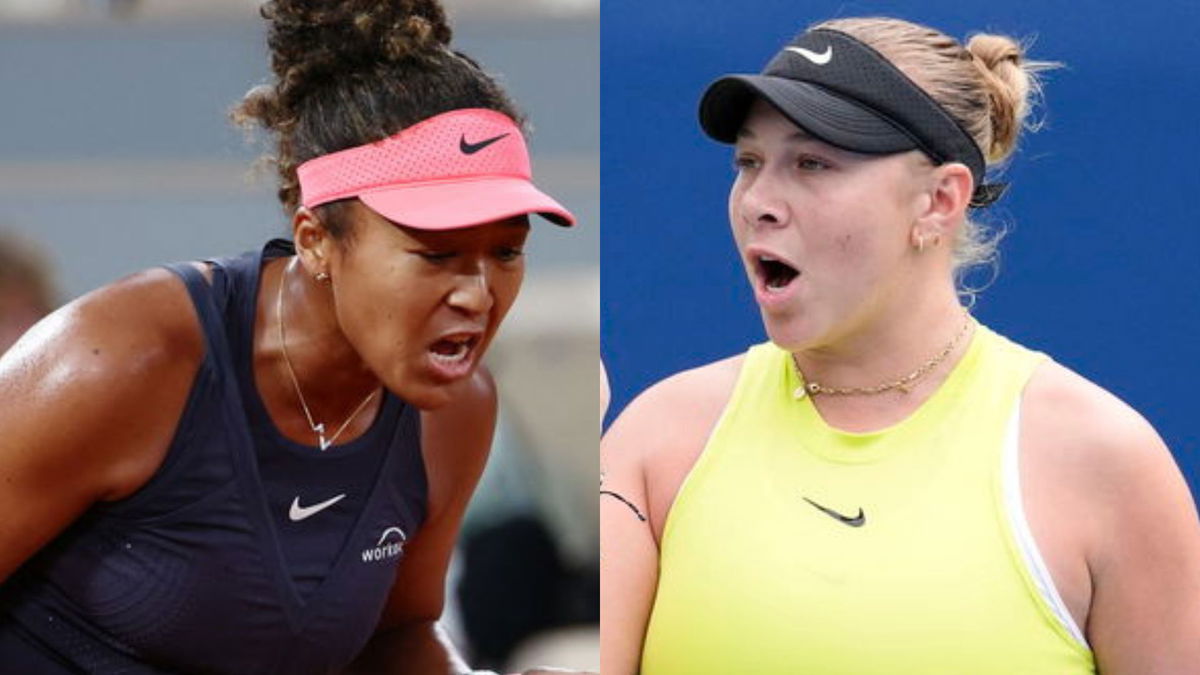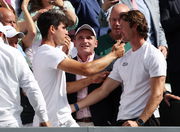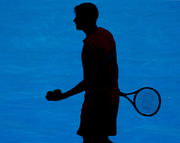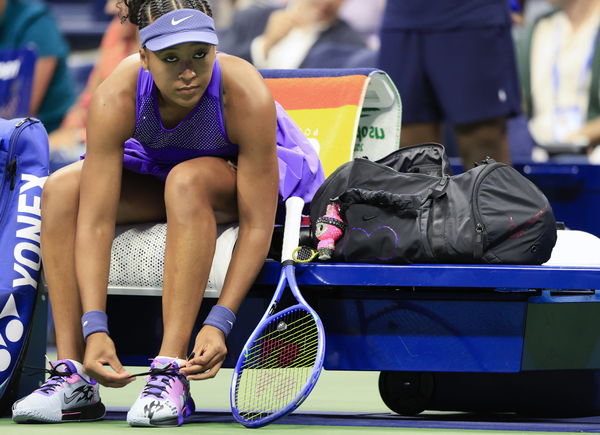
Imago
Naomi Osaka and Amanda Anisimova/ Image via Imago

Imago
Naomi Osaka and Amanda Anisimova/ Image via Imago
The semifinal stage of the 2025 US Open brought high drama on the court, but the images broadcast worldwide told a different story in the stands. Instead of the raucous atmosphere usually associated with Arthur Ashe Stadium, viewers saw rows of empty blue seats during one of the tournament’s marquee matchups. Even with an American player fighting for a place in the final, the showcase venue looked alarmingly hollow.
Watch What’s Trending Now!
The evening session began with a heavyweight clash between World No. 1 Aryna Sabalenka and fourth seed Jessica Pegula. Their rematch of last year’s final started at 7:00 p.m. local time and extended past the two-hour mark. Sabalenka ultimately prevailed 4-6, 6-3, 6-4, leaving the court at around 9:30 p.m. That delay pushed the second women’s semifinal, featuring Naomi Osaka and Amanda Anisimova, well into the late-night hours.
By the time the two walked out to a half-lit stadium, large portions of the lower bowl were unoccupied. The optics were troubling for the US Open, which boasts a venue capacity exceeding 20,000. Australian player Daria Saville voiced what many were thinking, writing on X, “Arthur Ashe being half empty for Anisimova vs Osaka is so sad. Do you think it’s cause it’s just too late??” While scheduling was the immediate target of criticism, ticket costs have also lingered as a concern. Even at the quarterfinal stage, the lowest available session price hovered around $143 on Vivid Seats, before fees, raising questions about accessibility for average fans.
ADVERTISEMENT
Arthur Ashe being half empty for Anisimova vs Osaka is so sad. Do you think it’s cause it’s just too late??
— Daria Saville (@Daria_gav) September 5, 2025
Despite the subdued audience and a bizarre technical fault that caused the match to be paused, the tennis itself was gripping. Osaka, seeded 23rd, secured the opening set in a tense tiebreak, and for a moment it appeared the former world No. 1 would impose her experience. Anisimova, however, refused to let the evening slip away. She clawed through another tiebreak in the second set, then outlasted Osaka in a physical deciding frame to claim a 6-7(4), 7-6(3), 6-3 victory. Only once before had Osaka lost a major match after winning the first set, underscoring the scale of Anisimova’s turnaround.
Afterward, Anisimova reflected on the psychological resilience that carried her through. “Today, I could have easily said, ‘Oh, she’s playing better than me, and I can’t really do anything,’” she said. “I really tried to find a way any way I could to stay in the match, even though it was extremely tough, and she was playing really great tennis.” The 24-year-old acknowledged the sting of her one-sided Wimbledon final loss to Iga Swiatek earlier this summer, but framed that defeat as a lesson. “I have really done a better job of that, and especially since the Wimbledon final. I think I have really shifted with my attitude, as well,” she added.
ADVERTISEMENT
Anisimova will now meet Sabalenka in Sunday’s final, her second consecutive appearance at a Grand Slam championship match. Yet for the US Open, the more pressing question is whether the sight of an American semifinalist playing before a half-empty arena can be dismissed as an aberration. Between high entry costs and late scheduling on a weeknight, the optics have triggered a broader conversation about how the tournament manages its most important sessions. And now, the US Open is facing criticism after Amanda Anisimova’s semifinal win over Naomi Osaka played out in a half-empty Arthur Ashe Stadium, raising concerns over high ticket prices and late-night scheduling.
ADVERTISEMENT
Empty seats at US Open semifinal spark debate over pricing and late-night scheduling
The pricing debate emerged strongly, with one fan noting, “Ticket prices has to be a cause as well. Despite living in the US, the Australian Open and French Open prices were more reasonable when I attended.” This aligned with reports that the lowest quarterfinal session ticket hovered around $143 before fees, suggesting affordability concerns might have contributed to the empty seats.
Weather and premium costs were also flagged. A fan wrote, “late, pouring rain, work night and the tickets for the seats visible on tv started at 1K 🫠 some of us are watching on tv twenty mins from the stadium even though we’d love to be there.” Such a take highlights not just scheduling, but also the prohibitive pricing for prime seating that left the lower bowl unfilled.
Top Stories
Carlos Alcaraz’s Decision to Sack Juan Carlos Ferrero Over Money Deemed “Ridiculous” by Former Pro

3x Grand Slam Champion Confirms Australian Open Return at 41 After Shocking Comeback

College Tennis Star Finds His Spark Back After Duke University Almost Made Him Quit

Rafael Nadal Returns to Tour With a Surprising Twist for Rising Stars

Carlos Alcaraz’s Ex-Coach Breaks Silence on the Spaniard Days After Shocking Split


Imago
Naomi Osaka of Japan has a labubu decorating her tennis bag when she plays Karolina Muchova of Czechia in their quarterfinal match in Arthur Ashe Stadium on day 11 at the 2025 US Open Tennis Championship at the USTA Billie Jean King National Tennis Center in New York City on Wednesday, September 3, 2025. PUBLICATIONxINxGERxSUIxAUTxHUNxONLY NYP20250903130 JOHNxANGELILLO
Timing appeared equally problematic, with one user bluntly stating, “it’s past midnight on a work/school night 😭 not good scheduling 😭.” The Sabalenka–Pegula clash stretched the evening, pushing Osaka and Anisimova’s semifinal into late-night hours when many spectators had already left or avoided attending altogether.
ADVERTISEMENT
Another fan underlined the dilemma, explaining, “It is past midnight and people have to work tomorrow. Anything before a 7pm start and the first match would be empty because ppl aren’t off work. It’s a lose lose situation.” The point illustrates the tournament’s balancing act: an earlier start risks low turnout, while later slots cause attrition by night’s end.
Beyond timing and weather, scalping and market practices were also questioned. One theory shared was, “my theory is that it has more to do with dynamic pricing + ticket scalping than the time. No other slam on a Thursday night would have their centre court half empty like it was today/yesterday.” And the implication is that secondary market tactics inflated visible seat costs, leaving sections vacant despite overall demand.
ADVERTISEMENT
Skip all the scheduling mishaps and soaring ticket costs. Never miss a beat with the EssentiallySports Live Blog on the US Open. Meanwhile, we caught up with some of your favorite stars at the US Open, one of them being Mirra Andreeva. Check it out:
View this post on Instagram
ADVERTISEMENT
ADVERTISEMENT
ADVERTISEMENT

